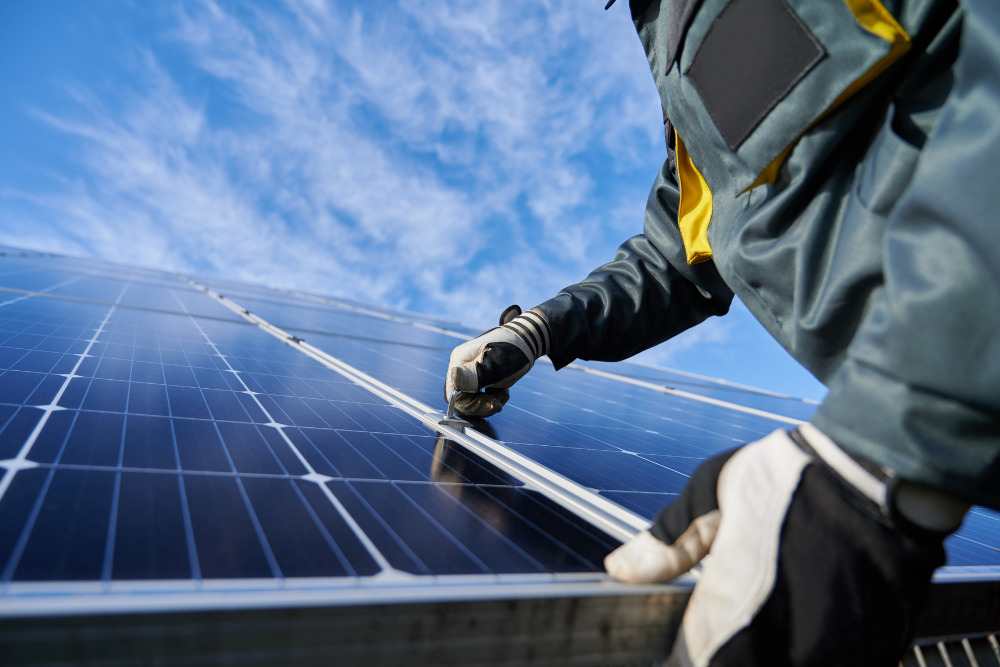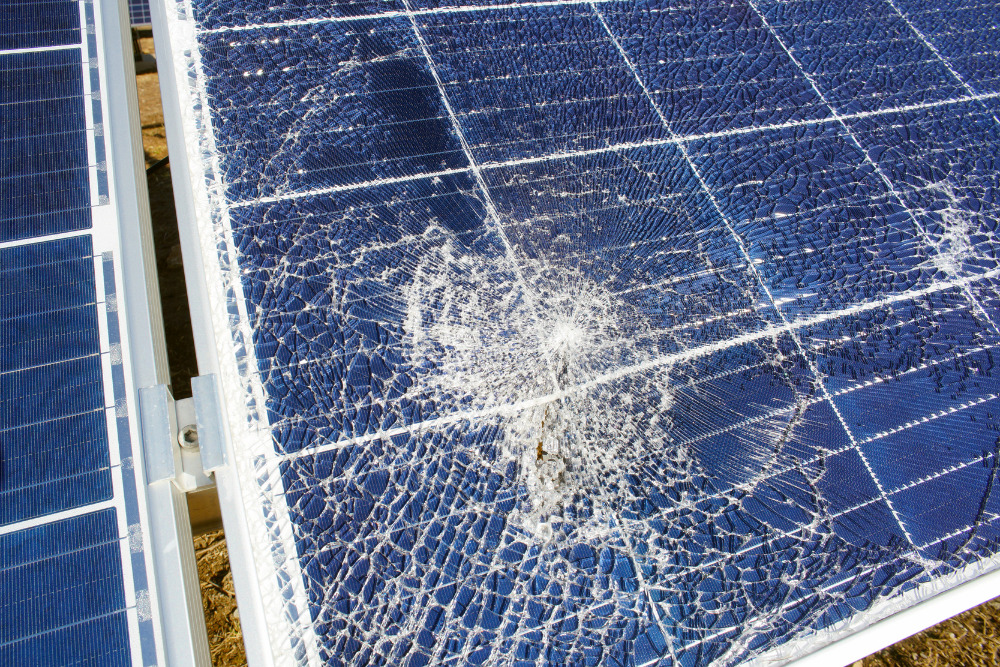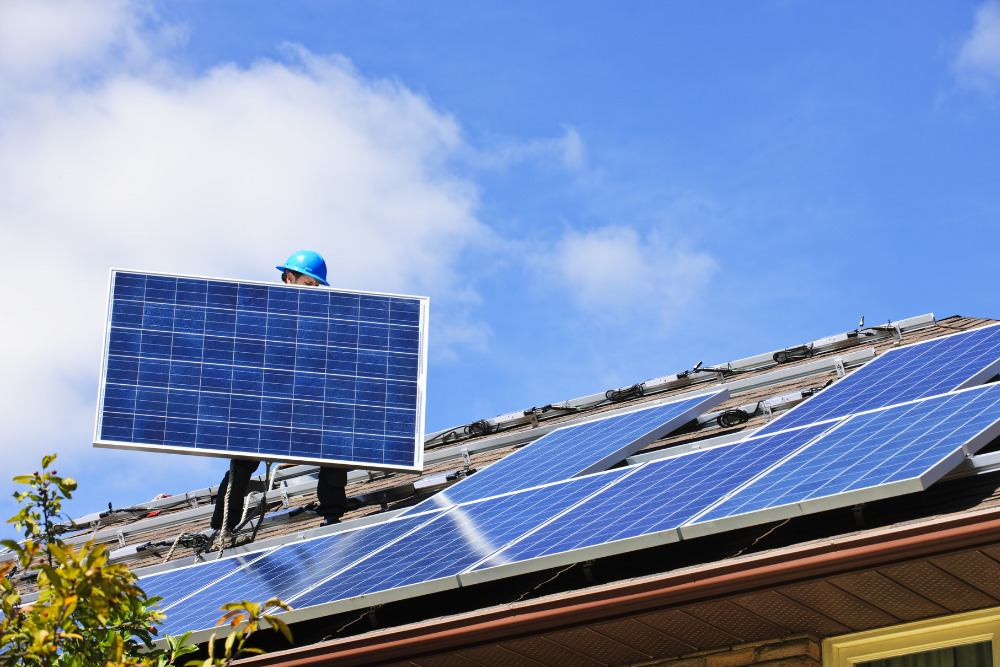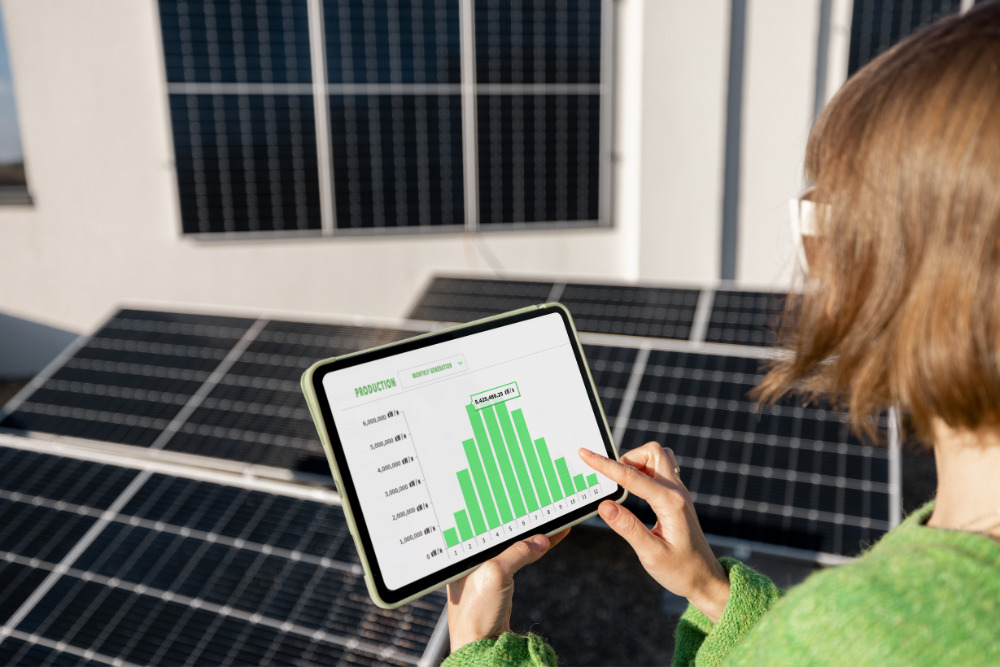
Solar panels may require occasional maintenance and repairs like any other technology to ensure optimal performance and longevity. General solar panel repairs include damaged panels, inverter replacement, fixing electrical issues, roof repairs, and resetting improperly installed panels.
While solar panels are designed to be durable and low-maintenance, like any technology, they can encounter issues over time. This is where professional solar panel repair services can provide troubleshooting and maintenance and restore the performance of your solar panel system.
Can Damaged Solar Panels Be Repaired?
Yes, in many cases, damaged solar panels can be repaired.
Solar panels are durable systems that provide renewable, clean energy. However, they’re vulnerable to damage by extreme weather conditions, critters or pests, power surges, and improper installations.
Regular maintenance services, like solar panel cleaning and installation of critter guards prevent PV (photovoltaic) system damage. Also, having a professional inspect your solar panel system on-site annually helps troubleshoot and resolve problems before they get out of hand. You can also track your system’s energy output and detect irregularities with a solar panel monitoring system.
A reduced energy output could indicate that your PV system isn’t working correctly due to damaged or broken components.
Here are some of the most common solar panel issues that can be repaired:
Cracks or Chips
Most solar panel cells have thin silicon layers that absorb and transfer light energy from the sun. The silicon expands and contracts when temperatures fluctuate in a process known as thermal cycling. These fluctuations may cause invisible micro-cracks or chips.
Micro-cracks can also form due to:
- Other environmental factors like humidity, freezing, hail, heavy snowfall, lightning, and strong winds
- Rough handling of solar panels during packaging and transportation
- Stepping on or dropping solar panels
- Improper solar panel installation
Minor cracks often go unnoticed since they don’t immediately affect the panels’ output. But they can worsen with time, reducing the solar panel cells’ efficiency and lifespan. So, it requires a solar panel technician's keen eye (usually a detecting device) to identify cracks.
Cracks might also occur on plastic solar panel backsheets. Cracked backsheets allow moisture and oxygen to penetrate the inner parts of a solar module, causing damage.
Broken or Damaged Glass
Solar panels usually have an outer glass casing that protects the inner components. Extreme weather elements and falling debris can shatter or damage this protective layer, especially if made of low-quality glass.
If the glass cover has only cracked partially and can still absorb light, you can laminate or waterproof it. However, this is mostly a temporary solution. Calling a qualified technician to replace the glass casing or reinstall the solar panel is a better solution.

Electrical Issues
A drop in your systems’ solar power production could indicate electrical issues. For instance, there could be faulty wiring or loose connections, power surges, or overvoltage.
It’s best to make a service call to an experienced electrician to diagnose and resolve electrical problems.
Inverter Replacement
Inverters are prone to regular wear and tear because they aren’t as resilient as solar panels. An unusually high electric bill could be a sign of a faulty inverter. You can also tell that an inverter is failing if you get a flashing orange or red color or an error code message from your inverter.
Inverter faults are commonly due to the following:
- Inverter overuse - using inverters beyond their working capacity
- Current or voltage fluctuations - damaged inverter bridges
- Electromagnetic wear on the inverter’s capacitor - usually due to extreme temperatures
- Ultrasonic vibrations - these cause friction and overheating in inverters
Hotspots or Cell Damage
Hotspots are areas on solar panels that are overly exposed to high temperatures when other portions are shaded. Extreme temperatures in these spots usually increase the pressure of solar panel cells and cause damage.
Hotspots may also occur if:
- There’s a cells mismatch - connecting cells with different outputs in one series
- You don’t clean your solar panels regularly - dirt and debris accumulate on some sections
- You installed low-quality solar cells
- There’s short-circuiting
Will The Rest Of A Solar Panel System Work With Damaged Panels?
A solar panel system can still work if the solar panels aren’t severely damaged.
A homeowner might be unaware of faulty solar panels since the PV system’s energy output doesn’t change instantly. However, an array with damaged solar panels is more likely to underperform over time.

The following factors affect a solar panel system’s energy production:
Individual Panel Performance
A solar panel has a specific output, or the amount of energy it can produce, under standard conditions. If faulty, the panel’s performance drops depending on how severe the damage is.
For instance, a solar panel with a shattered glass casing may not absorb the same amount of sunlight and convert it to energy as a new panel.
Impact on Overall System Performance
A solar energy system is an array of solar panels, each with a series of solar cells. Every cell in a solar panel contributes to the panel’s output. And each solar panel counts in the overall system performance.
So a damaged solar cell or panel will reduce the system’s overall amount of power generated.
Diode Protection
Diodes are semiconductors that protect solar panels and PV cells from damage by allowing electrical currents to flow in one direction. A bypass diode protects shaded solar panels from damage that could lead to output mismatches.
Since shaded solar panels produce less energy than unshaded ones, they’re prone to eventual damage from reverse voltage and overheating. So, the bypass diode prevents this by creating another electrical path so the current doesn’t flow through the shaded panel.
On the other hand, a blocking diode stops reverse currents from a battery from flowing through a solar panel. It can also protect the solar panel from overvoltage during power surges, safeguarding your solar investment.
Importance of Monitoring and Detection
You may not notice faulty solar panels in your PV system immediately. Sometimes, you’ll only realize it after receiving your monthly power bill. And it could be too late to repair the damaged components, requiring you to replace them.
That’s why it’s crucial to have a solar monitoring system that lets you know how your array is doing in real-time. These systems usually send instant SMS or email notifications when a problem arises in the solar power system.
They monitor and detect issues such as:
- Solar energy production and consumption
- Electrical parameters
- Faulty components like inverters
- Grid imports and exports

Are Damaged Solar Panels Covered Under Warranty?
Some solar companies cover damaged solar panels under warranty, although coverage varies.
For instance, some manufacturers offer product warranties covering manufacturing faults, untimely wear and tear, or damage by environmental factors. Such warranties can cover various costs, including solar panel repair services, shipment, and labor. But you could void the warranty if you’ve neglected or damaged the solar panels yourself.
Other solar panel manufacturers only offer product warranties arising from manufacturing defects. So you may need to pay out of pocket or get compensation from your homeowners insurance company to cover system repairs.
What Are The Benefits Of Solar Panel Repair Services & Regular Maintenance?
Solar panel repair services and regular maintenance offer many benefits, such as:
- Identifying issues and ensuring efficiency - fixing minor issues before they escalate prevents system underperformance.
- Extending the lifespan of solar panels - by replacing faulty components in a timely manner, your system will last longer. TIP: You can also use SolarSkins to protect your panels from the elements and extend their lifespan. As a bonus, these custom-printed overlays can be designed to match your roof tiles or shingles (or make a bold and artistic statement in a non-HOA neighborhood!)
- Safety and compliance - ensuring solar panel installation meets the current fire and building codes
- Warranty protection - well-maintained solar panels keep your warranties intact. Failing to stick to a regular cleaning and maintenance schedule may void the warranty, depending on the manufacturer and installer
- Cost-effectiveness - you’ll spend less money on minor repairs than major costly fixes or total replacement
- Expertise and efficiency - maintenance and repair services from professional technicians ensure that your solar system runs efficiently.
How To Find A Good Solar Panel Repair Company
Finding a reputable solar panel repair company can be challenging with the wide range of service providers on the market. Many solar companies offer solar panel maintenance services for commercial and residential solar panel arrays. Unfortunately, not all service providers have the ideal workmanship or certifications.
Ask friends and family for references and thoroughly research the providers in your area. Narrow down your choices by deciding if a solar company checks the following boxes:
- Is trustworthy and experienced in the industry
- Has well-trained and certified technicians and service team members
- Offers warranty coverage in compliance with manufacturer requirements
- Offers emergency repair services
- Has transparent estimates and pricing


